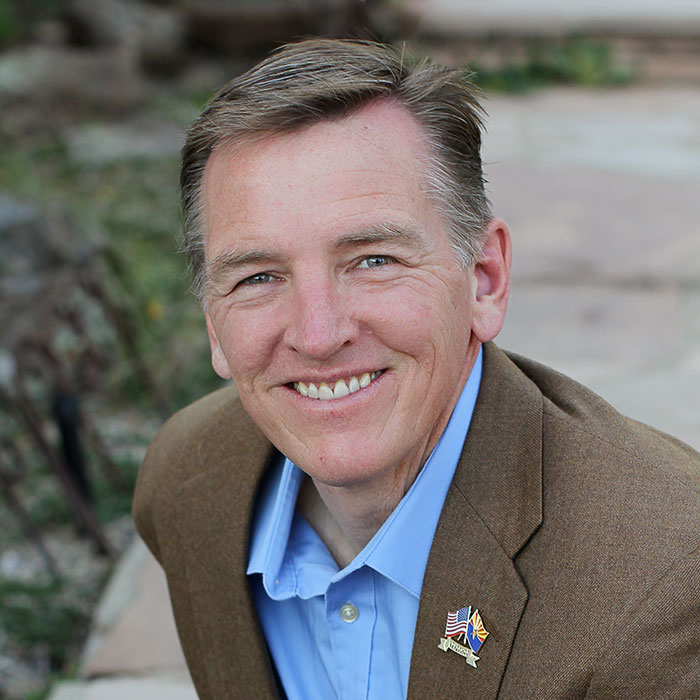|
For Immediate Release
Date: June 2, 2014
|
|
Contact: Gosar Press Office
Office: (202) 225-2315
|
PHOENIX, Arizona, June 2, 2014 - Today, U.S. Congressmen Paul Gosar issued the following statement following a joint field hearing in Phoenix, Arizona, that was attended by 5 members of the United States Congress including Lamar Smith (R-TX), Chairman of the House Science, Space, and Technology Committee:
"Resounding testimony today from Arizona witnesses confirmed that the EPA’s proposed water grab runs contrary to state and tribal water laws and would have devastating economic consequences for farmers, ranchers, small businesses, and water users in Arizona and throughout the country.
The EPA is once again overreaching and attempting to seize control of more of our resources - in this case water - by attempting to expand the definition of navigable waters to include things like intrastate waters, farm and stock ponds, prior converted crop lands, prairie potholes and trenches that contain rainwater. Arizonans can't afford more economic hurdles and thieveries of precious water supplies from an overzealous, unaccountable federal government operating in hyper mode.
It’s unfortunate the EPA and the Army Corps of Engineers refused to participate in the hearing. I think they would have learned a lot from hearing from the people on the ground in Arizona. I would encourage them to hold regional listening sessions in the future to ensure they hear from the citizens that will be most impacted from this flawed rule."
Notable Quotes from the Hearing:
Stefanie Smallhouse, testifying on behalf of the of the Arizona Farm Bureau said, "The newly proposed EPA rule for the Waters of the U.S. would be devastating to my family’s farming operation, as well as hundreds of others in agriculture in Arizona…This proposed rule is an economic disaster, and a dream killer for my kids. There is no way a family farm such as ours would be able to withstand the hefty fines which would be enforced as a result of this rule."
Bob Lynch, testifying on behalf of the Irrigation and Electrical Districts’ Association of Arizona said, "The EPA and the Corps have driven a truck through Justice Kennedy’s opinion in Rapanos. According to them, everything is relevant, everything affects everything, and everything is jurisdictional… How many permits will the Central Arizona Project need? Will it have to treat the water before it stores it in Lake Pleasant? Before it releases it back into its system to deliver to cities, towns, industries and agriculture? And who will be able to afford it? Certainly not agriculture…This may be the biggest jurisdictional overreach that I have witnessed in 50 years of law practice. I hate to say it but the only people who come out ahead on this proposed rule are lawyers."
Michael Lacey, testifying on behalf of the Arizona Department of Water Resources said, "The EPA’s proposed rule may serve to jeopardize the viability and resiliency of Arizona’s existing water portfolio and water delivery infrastructure and threaten development of the additional water supplies that will be necessary to sustain Arizona’s economic development. We are both puzzled and troubled as to why EPA has not worked with the states in this rules development."
Governor Gregory Mendoza testifying on the behalf of the of Gila River Indian Community said, "The Community is concerned that the Proposed Rule constitutes an over-reach of the Agencies’ CWA authorities that will result in increased permitting costs, delays, and potential litigation...The Proposed Rule should not have been issued before the EPA is able to confirm the scientific conclusions upon which the Proposed Rule has been based."
Background:
On March 25, 2014, the Environmental Protection Agency (EPA) and the U.S. Army Corps of Engineers (USACE) released a proposed rule that would assert Clean Water Act (CWA) jurisdiction over nearly all areas with any hydrologic connection to downstream navigable waters, including man-made conveyances such as ditches. Contrary to claims made by the EPA and USACE, this would directly contradict prior U.S. Supreme Court decisions, which imposed limits on the extent of federal CWA authority. Although the agencies have maintained that the rule is narrow and clarifies CWA jurisdiction, it in fact aggressively expands federal authority under the CWA while bypassing Congress and creating unnecessary ambiguity. Moreover, the rule is based on incomplete scientific and economic analyses.
The proposed rule can be downloaded here and the corresponding study released with the rule can be downloaded here.
Participants on the Dais:
U.S. Congressman Lamar Smith, Chairman of the House Science, Space, and Technology Committee
U.S. Congressman David Schweikert, Chairman of the House Science, Space, and Technology Subcommittee on the Environment
U.S. Congressman Paul Gosar, D.D.S., Member of the House Natural Resources Subcommittee on Water and Power
U.S. Congressman Matt Salmon
U.S. Congressman Trent Franks
Arizona State Senator Gail Griffin, Chairman of the Arizona Senate Committee on Water, Land Use and Rural Development
Witnesses: Michael Lacey of the Arizona Department of Water Resources, Governor Gregory Mendoza of Gila River Indian Community, Jay Johnson of the Central Arizona Project, Dr. Kirsten Engel of the University of Arizona, Stefanie Smallhouse of the Arizona Farm Bureau, Bob Lynch of Irrigation and Electrical Districts’ Association of Arizona, Spencer Kamps of the Home Builders Association of Central Arizona, Matthew Hinck of the Arizona Rock Products Association, and Nicole LaSlavic - Arizona Association of Realtors
Environmental Protection Agency (EPA) Administrator Gina McCarthy and Army Corps of Engineers Commanding General and Chief of Engineers Lieutenant General Thomas P. Bostick were invited to attend but refused the invitation to participate.
###
